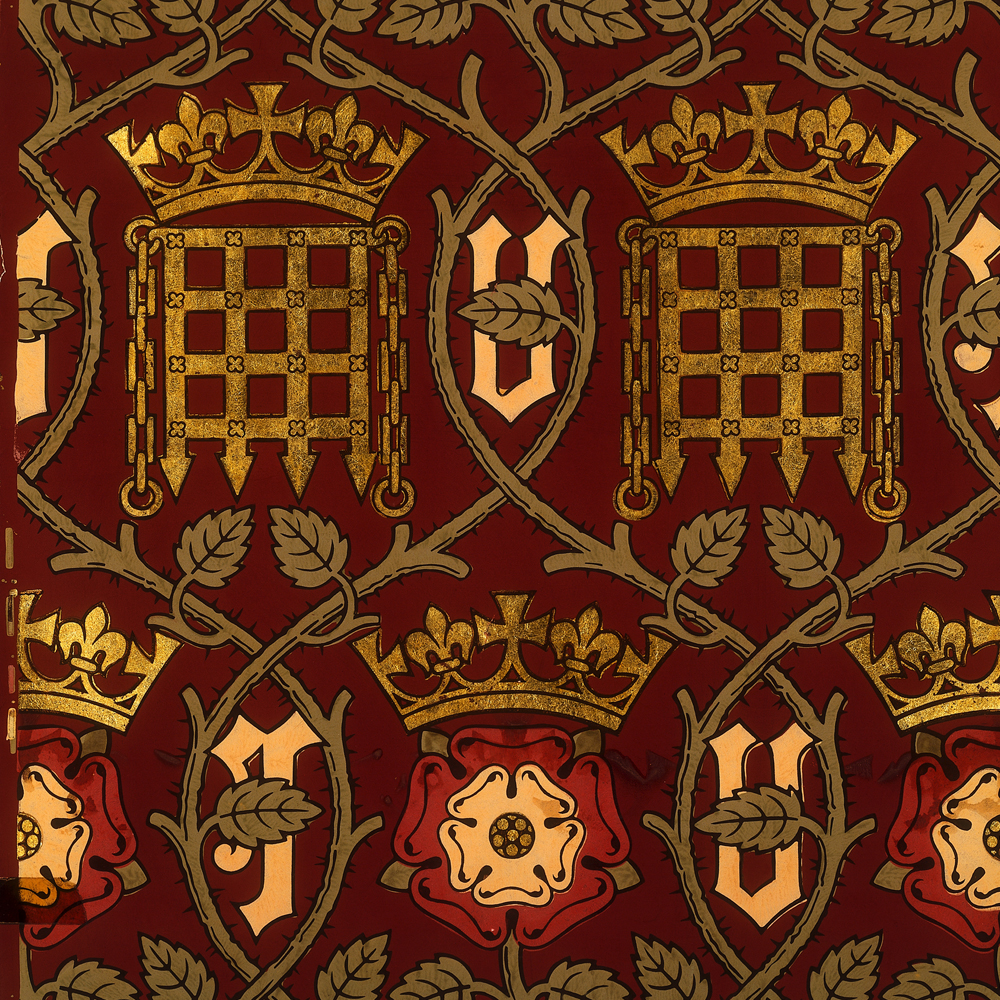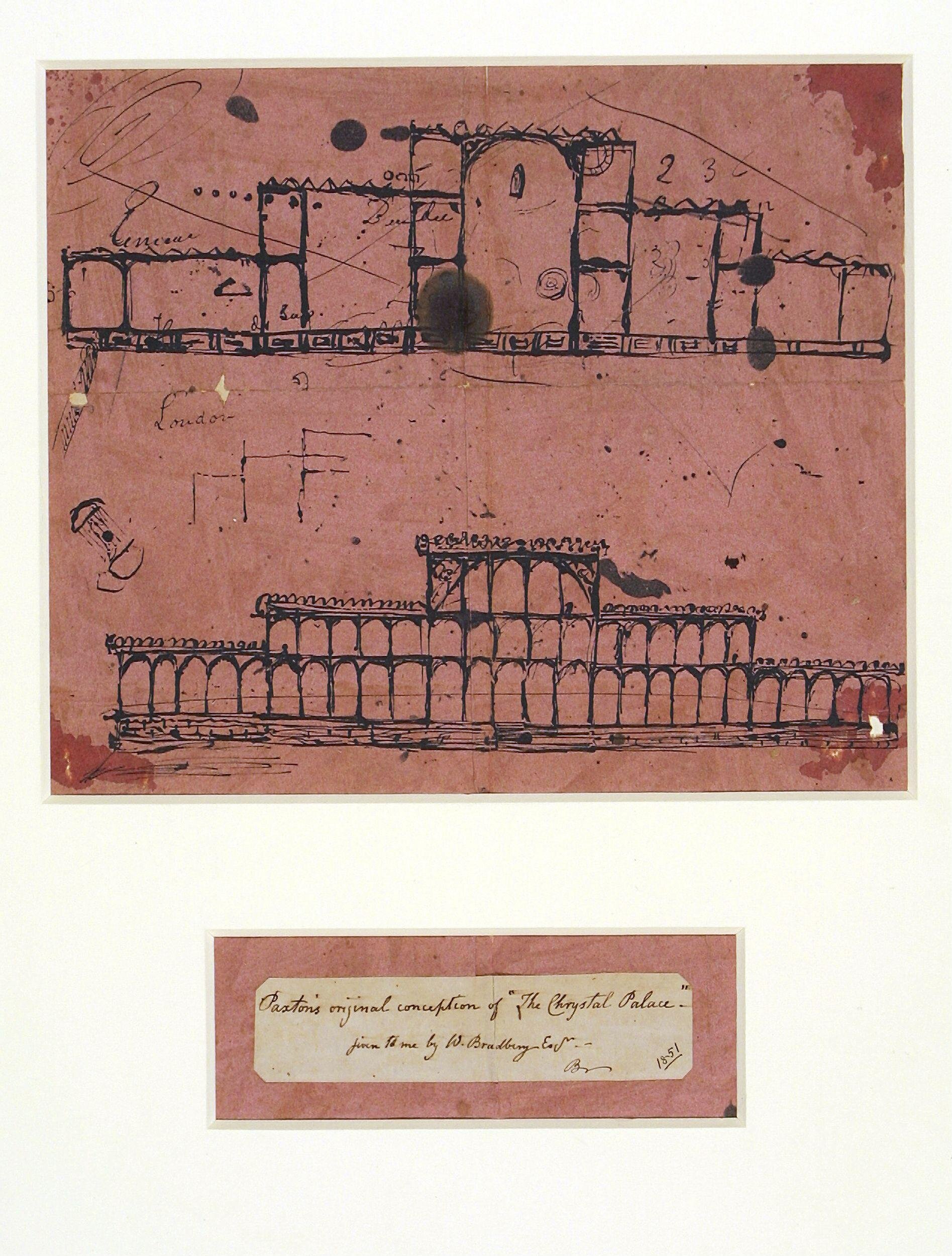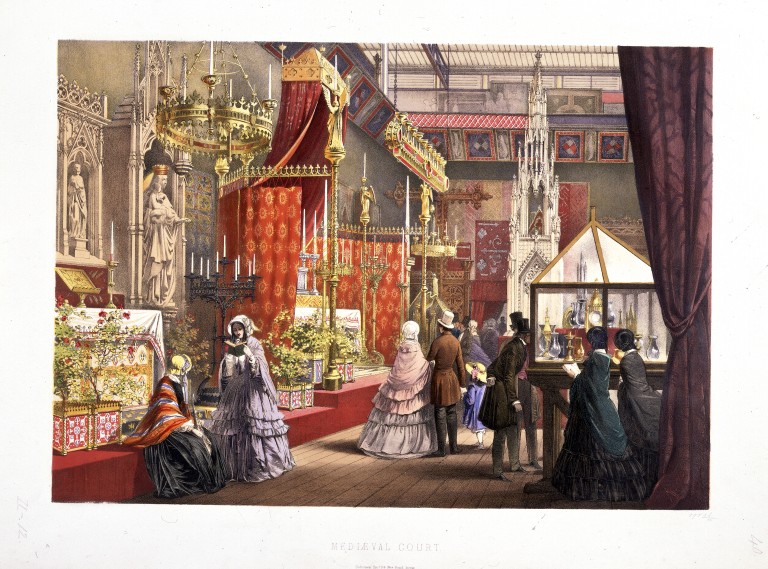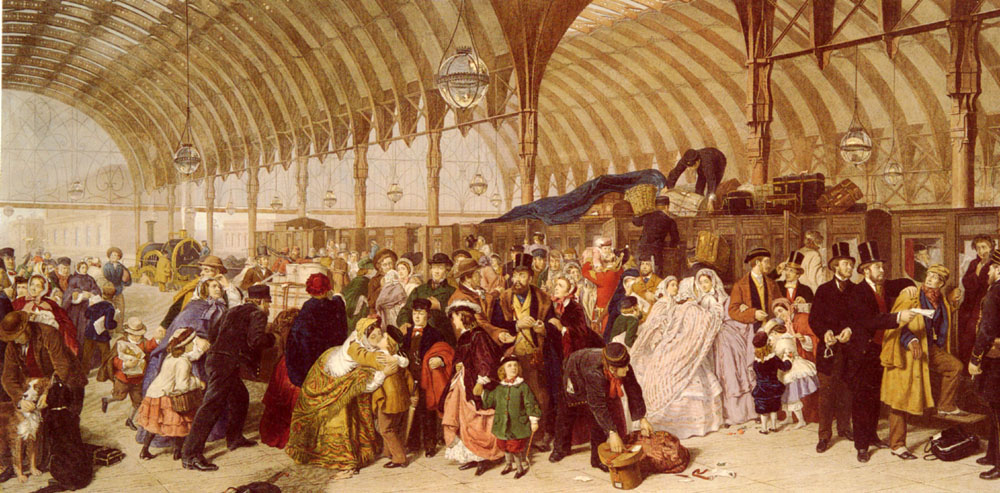''The Victorians saw British society as a pyramid, with royalty, the aristocracy, the Church, the arts and the professions on top, supported by industry, and with the workhouse at the bottom, was very familiar. Inherent within this vision, and enshrined in society was the idea that the rungs of the social ladder could be climbed only by hard work and integrity, an idea that was constantly explored by painters and writers. By this process the concept of industry achieved its own morality, with the word consciously achieving the dual meaning of hard work and industrialisation.A frequently used metaphor for the industrial process was the beehive, and many Victorian buildings featured bees, symbols both of hard work and the acceptance of the social order, in their decoration. George Cruikshank's well-known 1840 print, The British Bee Hive, underlines this and at the same time throws a spotlight on British society's classified view of itself.''
William Powell Firth was one of the greatest British painters, He has been described as the "greatest British painter of the social scene since Hogarth". specialising in gender subjects and panoramic narrative works of life in the Victorian Era.
During the Victorian era, neo-Gothic architecture becomes more significant as an continuation of the Gothic style. Neo-Gothic became the style of the age.
Аn example is the Palace of Westminster which may refer to the Old Palace, a medieval building complex that was destroyed by fire in 1834, and its replacement New Palace that stands today. The New Palace is rebuild and designed by Charles Barry.He collaborated with Pugin who did the interior design (furniture, stained glass, sculpture, wallpaper, decorative floor tiles, mosaic work etc.) and also designed the Palace clock tower, popularly known as Big Ben.The palace has been build for around 30 years.
One of the most significant events during the Victorian era was ''The Great Exhibition '', known also as ''The Great exhibition of works of industry of all nations'' 1851. Exhibition of the greatest discoveries of the century and of manufactured products. The exhibition was held at the Crystal Palace, from May to October in Hyde Park, London. Attended by prominent figures of that time as Charlotte Brontë, Lewis Carroll, George Eliot, Charles Darwin and others.
In England throughout much of the nineteenth centaur, the interest in design and its appropriate role in the industrial production of goods was sparked, in part, by an 1836 report of the Parliamentary Select Committee on Art and Manufactures . They expressed concerns about the quality of the British manufacture goods, that they were lacking of good design and were overly decorative, and they were afraid of loosing the ''export race'' compared to other countries like France, Germany and the Unitated States. That's why they came out with Three principles of design reform: first, that decoration is secondary to form; second, that form is dictated by function and the materials used; and third, that design should derive from historical English and non-Western ornament as well as plant and animal sources, distilled into simple, linear motifs. According to the Committee ''The Great exhibition'' was a failure with it's abysmal display of domestic furnishings.
During the Victorian era, neo-Gothic architecture becomes more significant as an continuation of the Gothic style. Neo-Gothic became the style of the age.
Аn example is the Palace of Westminster which may refer to the Old Palace, a medieval building complex that was destroyed by fire in 1834, and its replacement New Palace that stands today. The New Palace is rebuild and designed by Charles Barry.He collaborated with Pugin who did the interior design (furniture, stained glass, sculpture, wallpaper, decorative floor tiles, mosaic work etc.) and also designed the Palace clock tower, popularly known as Big Ben.The palace has been build for around 30 years.
 |
| Palace of Westminster |
 |
| Big Ben, Palace of Westminster |
 |
| Palace of Westminster, The Lords Chamber |
 |
| Wallpaper for the Palace of Westminster, designed by August Pugin, 1847 |
One of the most significant events during the Victorian era was ''The Great Exhibition '', known also as ''The Great exhibition of works of industry of all nations'' 1851. Exhibition of the greatest discoveries of the century and of manufactured products. The exhibition was held at the Crystal Palace, from May to October in Hyde Park, London. Attended by prominent figures of that time as Charlotte Brontë, Lewis Carroll, George Eliot, Charles Darwin and others.
The Crystal palace was an innovative and modern for its time building made of iron and plate glass, which were new invention for the time. The method for producing a plate glass was invented in 1848, and such a large amount of glass is used for the first time in construction. It's designed by Joseph Paxton, an English gardener, what's why the palace itself looks like a green house.The palace is built for 2 week. In 1936 the palace is destroyed by fire.
 |
| Joseph Paxton's first sketch for the Great Exhibition Building, about 1850 |
''The Great Exhibition was opened on 1 May 1851 by Queen Victoria. It was the first of the World's Fair exhibitions of culture and industry. There were some 100,000 objects, displayed along more than ten miles, by over 15,000 contributors.Britain occupied half the display space inside with exhibits from the home country and the Empire. France was the largest foreign contributor. The exhibits were grouped into four main categories—Raw Materials, Machinery, Manufacturers and Fine Arts. ''
''At first the price of admission was £3 for gentlemen, £2 for ladies, later the masses were let in for only a shilling a head. Six million people—equivalent to a third of the entire population of Britain at the time—visited the Great Exhibition. The event made a surplus of £186,000 (£17,770,000 in 2014), money which was used to found the Victoria and Albert Museum, the Science Museum and the National History Museum in South Kensington. The Crystal Palace had the first major installation of public toilets the Retiring Rooms, in which sanitary engineer George Jennings installed his ''Monkey Closet'' flushing lavatory (initially just for men, but later catering for women also).During the exhibition, 827,280 visitors each paid one penny to use them (from which originated the euphemism "spending a penny").The Great Exhibition closed on 11 October 1851.''
 |
| Queen Victoria opens the Great Exhibition in the Crystal Palace, 1851 |
 |
| The Crystal Palace, London |
 |
| The Crystal Palace inside with 27-foot tall Crystal Fountain and full grown tree |
 |
| The Medieval court at the Crystal Palace designed by Pugin |
 |
| The Medieval court at the Crystal Palace designed by Pugin |
In England throughout much of the nineteenth centaur, the interest in design and its appropriate role in the industrial production of goods was sparked, in part, by an 1836 report of the Parliamentary Select Committee on Art and Manufactures . They expressed concerns about the quality of the British manufacture goods, that they were lacking of good design and were overly decorative, and they were afraid of loosing the ''export race'' compared to other countries like France, Germany and the Unitated States. That's why they came out with Three principles of design reform: first, that decoration is secondary to form; second, that form is dictated by function and the materials used; and third, that design should derive from historical English and non-Western ornament as well as plant and animal sources, distilled into simple, linear motifs. According to the Committee ''The Great exhibition'' was a failure with it's abysmal display of domestic furnishings.


No comments:
Post a Comment